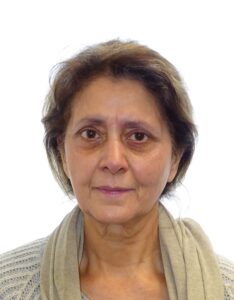Stroke: A Deeper Dive
Stroke: A Deeper Dive, provides an overview of the types, causes and treatments, with scientific and medical expressions explained in simple terms.
What causes a stroke?
Anyone can have a stroke at any age. While the majority of strokes are experienced by older people, younger people and even children can be affected. There are genetic factors to be aware of, and if parents or relatives have had a stroke it’s more likely that you will too. There are also medical conditions which can lead to stroke, including:
- High blood pressure
- Diabetes
- Atrial fibrillation
- High cholesterol
There are two different types of stroke, ischaemic stroke and haemorrhagic stroke, and the causes are very different. About 85% of strokes are Ischaemic, and 15% are haemorrhagic.
Ischaemic stroke
An ischaemic stroke, or transient ischaemic attack (TIA), happens when an artery that usually supplies oxygen-rich blood to the brain becomes blocked. When the blood supply is blocked, brain cells begin to die. When brain cells die, abilities controlled by the affected part of the brain are lost. The most common abilities to be lost as a result of stroke are memory and muscle control.
What causes the blockage?
The most common cause for a blocked artery is a blood clot.
Atherosclerosis
Blood clots often happen when collections of platelets (red blood cells that stick together to help heal a wound), hit an area that has been narrowed by fatty deposits on the inside of the artery wall. When fatty deposits collect they form plaques, in a process that is called atherosclerosis.
Carotid artery disease
The two main arteries that carry oxygen to the brain, face, scalp and neck are called the carotid arteries. If plaque builds-up specifically in the carotid arteries, the condition is called carotid artery disease.
Narrowing arteries
It is a natural part of the ageing process that arteries narrow, and narrower arteries leads to a higher risk of clot. However, there are certain things that accelerate the process to a dangerous degree:
- Smoking – tobacco smoke causes thickening of the blood, narrowing of the arteries, and restricted blood-oxygen levels – people who smoke are 6 times more likely to have a stroke than non-smokers
- High blood pressure – damages and thins arteries throughout the body, leading to a higher risk of blood clots and blockages
- Obesity – can lead to fatty deposits in the arteries and cause high blood pressure and diabetes
- High cholesterol levels – cholesterol is a lead contributor to fatty buildup and plaques in the arteries
- Diabetes – a lack of insulin can lead to high blood-glucose levels, which can lead to fatty deposits and plaques in the arteries
- Excessive alcohol intake – drinking too much increases your risk of high blood pressure, atrial fibrillation, diabetes and being overweight. All of which are risk factors for stroke
Haemorrhagic stroke
A haemorrhagic stroke is caused by sudden bleeding in the brain. The bleeding puts pressure on the brain as it presses against the skull. This causes damage to brain cells and tissues.
The main cause is high blood pressure. Blood pressure is a measure of the force of blood pushing against the walls of the arteries. The higher and more regular the force, the more strain is put on arteries and blood vessels. If blood pressure rises and remains high over time, it can cause damage. For instance, if the pressure is too great, the constant strain can cause an aneurysm; a balloon-like bulge in an artery, which can stretch and burst.
Arteriovenous malformations (AMVs) are tangles of faulty arteries and veins that can rupture within the brain. High blood pressure puts strain on these malformations, and can cause them to burst.
Risk factors for high blood pressure include:
- Being overweight or obese
- Excessive alcohol intake
- Smoking
- A lack of exercise
- Prolonged stress
A brief history of stroke
- 2,400 years ago Hippocrates recognised stroke and referred to it as apoplexy, which comes from the Greek, meaning “struck down by violence”.
- 1500s – the term ‘stroke’ is used in a religious context to describe a ‘strike’ from God.
- In the mid 1600s Jacob Wepfer discovered that those who died from apoplexy had bleeding in the brain. He also found that a blockage in one of the blood vessels in the brain could be a cause.
- In 1807 Dr. Amos Twitchell carried out the first surgery on the carotid arteries. This involved opening the main artery in the neck and removing the plaques. As anaesthetic wasn’t discovered until 1846, it’s likely that a procedure of this kind, at this time, was very dangerous and painful.
- In 1928 the two categories of apoplexy were discovered, based on bleeding in the brain caused by hemorrhage or blockage of an artery.
- The term ‘stroke’ became more popular during the late 1900s, as the terms “brain attack” and “cerebral vascular accident” became more popular.
- 1996 – the use of TPA (tissue plasminogen activator) is approved. This treatment breaks-down the blood clots that cause ischemic strokes.
The signs and symptoms
The symptoms of a stroke can be identified using the term F.A.S.T.:
Face
- Has the face dropped to one side?
- Is the person able to smile?
- Has their mouth or eye dropped?
Arms
- Can the person lift both arms?
- Can they keep their arms raised?
Speech
Ask the person a question:
- Is their speech slurred or garbled?
- Are they able to talk at all?
Time
Dial 999 immediately if you suspect a stroke.
Read Dr. Jane Gilbert’s article about what to do if someone has a stroke.
The diagnosis
Diagnosis will need to be rapid, as speed of treatment can make a huge difference. For instance, TPA is effective at minimising further strokes, but it’s only effective up to 4 hours after the stroke has happened.
- A doctor will ask questions about the events leading up to the stroke.
- Blood tests will be carried out to determine cholesterol and blood sugar levels.
- Pulse will be checked for irregular heartbeat
- Blood pressure will also be checked
Brain scans
A brain scan can determine:
- The cause of the stroke, whether ischaemic or haemorrhagic
- Which part of the brain has been affected
- The extent of the damage
A brain scan should be carried-out within 1 hour of arriving at the hospital.
The two types of scan used are:
- MRI scan: a magnetic field and radio waves are passed through the body to build an intricate image of the inside of the body.
- CT scan: like an x-ray, a CT scan builds a 3D image of the brain, helping those in charge to build a more complete picture of the possible problem areas.
Tests
Swallow test
As a stroke often damages muscle-control, the ability to swallow is commonly lost. If the patient cannot swallow properly, fluid or food particles can get stuck in the lungs, leading to pneumonia or chest infections.
The test is simple; a few teaspoons of water are given to the patient. If they are able to swallow these, then they will be given half a cup of water. If they have trouble at all, they will be referred to a speech therapist, and fluids and food will be provided through a drip.
Heart and blood vessel tests
Later on, certain tests may be carried out on the heart and blood vessels. The most common tests are:
Carotid artery ultrasound (usually carried out within 48 hours)
As we have said, the carotid arteries are the main arteries that feed blood to the brain. A carotid ultrasound assesses the arteries for any plaque build-up or narrowing.
Echocardiography
This test is related to the heart and tests for any contributory factors that may cause stroke. It involves passing a probe (tube) down the throat until it sits directly behind the heart. From that position it can provide a clear picture of the heart, including any clotting or further abnormalities.
This process is usually carried out under sedation.
The treatments
Because an ischemic stroke is caused by a blockage of blood to the brain, and a haemorrhagic stroke is caused by bleeding in the brain, the treatments are different. For this reason it’s important that a brain scan is carried-out before any treatments are administered, because the medicines that treat ischemic strokes can make haemorrhagic strokes worse and vice versa.
Treatment for ischemic stroke
As ischemic strokes are caused by a blockage, the aim is to remove clots and plaques that may be restricting blood flow.
Medicines
TPA drugs
The TPA drug (known as alteplase) that was approved in 1996 works by dissolving blood clots. TPA stands for Tissue Plasminogen Activator. Plasmin is an enzyme in the blood that breaks-down certain plasma proteins. Plasma makes-up 55% of blood and contains proteins that are an important part of the clotting process.
If a person has had a stroke that was caused by a clot, it’s important to prevent clotting, so plasmin is activated to reduce the levels of plasma proteins that cause clotting.
TPA is injected into the arm and must be injected within 4 hours of first symptoms in order to be effective. As with a lot of preventative medicines, it is better if TPA is injected as soon as possible.
Antiplatelet drugs
Aspirin, clopidogrel, and dipyridamole can also be used to reduce the likelihood of developing further clots. Platelets exist in the blood and help the body to form clots, and to every microlitre of blood, there should be 150,000 to 450,000 platelets.
Anticoagulants
Prevent blood clots by changing the chemical composition of the blood. Warfarin, apixaban, dabigatran, edoxaban and rivaroxaban can all be used long-term to prevent clots from forming. They’re often used if:
- The patient has atrial fibrillation that upsets the flow of blood through the heart, causing clots
- The patient has a history of blood clots
- The patient has developed deep vein thrombosis, a blood clot in the veins in their legs, because the stroke has prevented them from moving one of their legs
Anticoagulants are known as “blood thinners”, but they don’t actually thin the blood. Instead they work by limiting the production of vitamin K in the liver. Vitamin K regulates normal blood clotting, so limiting it increases the time it takes for blood to clot. As a result, anticoagulants won’t break down existing clots, but they may prevent more clots from forming and existing clots from getting any bigger.
Procedures
Thrombectomy
On rare occasions, an emergency procedure known as a thrombectomy may be performed. What it does is remove blood clots to help restore blood flow to the brain. Before reading further it’s worth knowing that the procedure is most often carried-out under local or general anaesthetic.
A thrombectomy involves inserting a catheter into an artery, often in the groin, and passing a small device up the artery and into the brain.The device can then remove the clot.
There are risks involved with a thrombectomy, including:
- Excess bleeding
- Infection
- Damage to the blood vessel at the site of clot
- Reaction to anaesthesia
An emergency thrombectomy will normally only be performed if the patient is ineligible for TPA treatment, or if TPA treatment has failed.
Carotid endarterectomy
The carotid arteries are the main arteries that carry blood through the neck and into the brain. Some ischaemic strokes are caused by a narrowing of these arteries, often caused by a buildup of fatty plaques. These plaques can “catch” clots, causing blockages.
A carotid endarterectomy is a surgical procedure that unblocks the artery from these fatty plaques. The surgeon makes an incision in the artery, and physically removes the plaques.
If both of the carotid arteries need to be unblocked, the procedures will be performed separately, a few weeks apart.
What happens:
- A small incision will be made to reveal the artery.
- The artery will be clamped to stop blood flow.
- If the surgeon chooses to insert a shunt, it will be inserted now. A shut is a plastic tube that can be used to divert blood flow around the area of artery the surgeon is working on.
- The surgeon can now remove the plaques that are restricting blood flow through the artery.
- Once the procedure is complete, the surgeon will close the artery with stitches or a cephalic vein patch (CVP).
A cephalic vein patch is a patch that is sutured into the artery to block the hole made during the surgery. Regular stitches can have the effect of narrowing the artery, whereas a patch will maintain the width and flow.
Treatment for haemorrhagic stroke
Haemorrhagic stroke treatment is about stopping excessive bleeding in the brain. If the patient has high blood pressure it’s important to bring this down to a safe level. Antihypertensive medications can help to bring heart rate back in line. These include:
- Thiazide diuretics
- Angiotensin-converting enzyme (ACE) inhibitors
- Calcium channel blockers
- Beta-blockers
- Alpha-blockers
Most of these medications work by widening the blood vessels and arteries. By giving the blood more room to move the pressure behind it doesn’t need to be as great. This allows blood pressure to drop as it doesn’t take as much effort for the blood to get where it needs to go.
Lowering blood pressure will prevent further strain being put on the arteries and blood vessels in the brain, which can prevent further strokes from occurring.
Surgery
Emergency surgery can remove blood from the brain and repair burst blood vessels. The procedure is known as a craniotomy.
A craniotomy involves removing a section of skull, allowing the surgeon to access the bleeding and carry out repairs. The piece of bone that has been removed is generally replaced by an artificial metal plate.
The side effects of stroke
Despite the fundamental difference between ischemic strokes and hemorrhagic strokes, they share some side effects.
Problems with movement and balance
Damage to the brain can cause difficulties with movement. Under normal circumstances the brain communicates with a limb through neurological pathways, which then communicate with the central nervous system. For instance, when reaching out to pick-up a cup of tea, the brain has to tell the arm to lift, messages from the optic nerve have to estimate distance, and then the brain has to tell the hand to grip. If there’s an interruption in the way the brain communicates or processes this information, it can lead to difficulty with everyday activities like eating, washing and dressing.
This side effect can be improved with regular exercises, stretches, medications, and sometimes even surgery.
Problems with vision
Visual issues come in two categories; loss of vision and visual perception problems. Sometimes vision is lost on the left-hand or right-hand side of each eye, sometimes there are blind spots floating in the middle of the field of vision.
Visual perception problems can contribute to problems with movement and balance. It can be difficult to focus, and it may be difficult to blink. Common effects are:
- Double vision
- Visual midline shift – where the centre of vision seems to shift one way or the other
- Visual neglect – where objects in a certain area are ignored
Problems with speech
A common problem, difficulty communicating after a stroke is called aphasia. This communication difficulty covers speaking, understanding speech, reading and writing. The type of aphasia experienced will depend on the area of brain damaged by the stroke, and how extensive the damage has been.
Full recovery is possible. Speech therapy is the most common treatment for aphasia, and can provide methods and exercises that will help to improve communication.
Problems with swallowing
Also known as dysphagia, problems with swallowing often happen immediately after a stroke, but improve over time. Dysphagia can cause difficulties with eating, drinking, taking medications, and even breathing. If it’s suspected that a patient has dysphagia they will often be fed fluids and nutrients through a drip until they have seen a speech therapist.
The speech therapist will give advice on how to eat and drink successfully, and provide exercises that can be used to regain control.
Excessive tiredness
Sleep problems are very common after stroke and can include:
- Insomnia – which can cause depression, memory problems and night-time falls, all of which can affect recovery.
- Obstructive sleep apnoea – abnormal breathing patterns that include choking, gasping and snoring. This is very serious as it can increase the risk of a further stroke.
- Sleep-wake cycle disorders – caused by the cycles of day and night no longer having an effect, a stroke patient may have difficulty getting to sleep and can be particularly difficult to wake.
Sleep problems can be treated with medications and therapy.
Problems with memory
Memory loss is a common side effect of most brain-related problems. When the brain is damaged it’s often less able to commit experiences to long-term memory, meaning that experience can be limited to the immediate. Sleep problems can contribute to this, as it’s during sleep that a lot of the experiences of the day are converted to long-term memories. Living life in the moment is all very well in theory, but it can lead to issues with:
- Recalling the right words and names for things
- Following instructions
- Remembering directions and getting lost
As the brain repairs, memory often recovers, although it might continue to be affected long-term. There are brain re-training techniques that can be adopted, and behaviours that might help to control the fallout.
Emotional changes
Coming to terms with the effects of a stroke can be hard. It’s a lot to process, after all a person can go from fully functioning to having to re-learn basic functions, overnight. Add to this scarring in the brain, caused by the trauma, that can lead to emotional instability, and stroke recovery can be an emotional rollercoaster. It’s not unusual for stroke patients to experience sudden and intense fear, frustration, anger and sadness.
There is support available via medications and therapies that can help a stroke patient and their family through these difficult times.
If you are caring for someone who has had a stroke, the Hometouch team can help. We can provide you with advice and support, and help you to find a top quality carer in your local area.
Just call 020 7148 0746.
How does stroke affect life?
A stroke can be devastating for an individual and their family. The recovery can be long, involving ongoing medication, therapy and rehabilitation. It’s also likely that the person will change as a result of their trauma, which can be hard for their loved ones to process.
The good news is that the effects do usually improve over time, the bad news is that it’s difficult to determine how much time it will take.
It’s important to take it one day at a time and take advantage of all the support you can. If you’re caring for someone who has had a stroke, it’s vitally important that you don’t neglect your own needs. It’s easy to forget yourself as you focus all your energy on caring for your loved one, but stroke recovery can take years and it’s important you don’t put your own health at risk in the process.
If you’re caring for someone who has had a stroke, HomeTouch can help. Whether it’s a day off to run errands and catch-up with friends, or a week or two for a well-earned holiday, we have highly qualified carers available on a live in or hourly basis, who can help you through this time.
If you’re unsure about the prospect of care, that’s ok. You can download our impartial guide to elderly care (which is applicable no matter the age of your loved one) and get to know the many options available. There’s no harm in knowing more, and a carer might be able to provide you and your loved one with the support you need.
Find out more:
- What to do if someone has a stroke
- Are stroke symptoms permanent?
- Stroke treatment at home
- Can stroke cause seizures?
- Top gadgets for self-care
- Stroke and diabetes
- Stroke and dementia
Sources:
- American Heart Association. How high blood pressure can lead to stroke. Available at: https://www.heart.org/HEARTORG/Conditions/HighBloodPressure/LearnHowHBPHarmsYourHealth/How-High-Blood-Pressure-Can-Lead-to-Stroke_UCM_301824_Article.jsp#.We4DABNSxTY. Last accessed 30/10/2017.
- National Heart, Lung, and Blood Institute. How is stroke treated? Available at: https://www.nhlbi.nih.gov/health/health-topics/topics/stroke/treatment. Last accessed 30/10/2017.
- Muto A et al. Patches for carotid artery endarterectomy: current materials and prospects. J Vasc Surg. 2009; 50(1): 206-213. https://www.ncbi.nlm.nih.gov/pmc/articles/PMC2759680/
- Khan R.S.A. et al. Cephalic vein for carotid patching. EJVES extra. 2005; 9(3): 35-36. https://www.sciencedirect.com/science/article/pii/S1533316705000129





